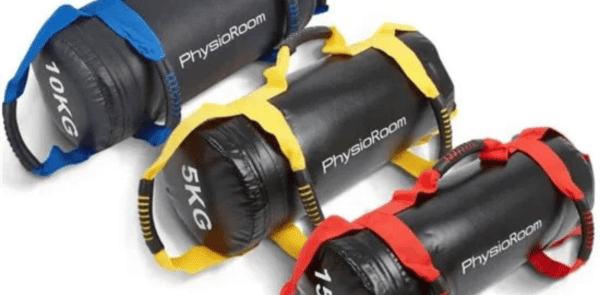In the world of fitness, versatility and efficiency are key to achieving your goals. Enter the weight training bags. These are dynamic and adaptable tools that can transform your workout routine. Regardless of your fitness level, harnessing one can elevate your:
- strength
- endurance
- overall fitness level
In this guide, we’ll unravel the secrets of effective power bag training. Keep reading to understand the basics and master advanced techniques!
Understanding Power Bags
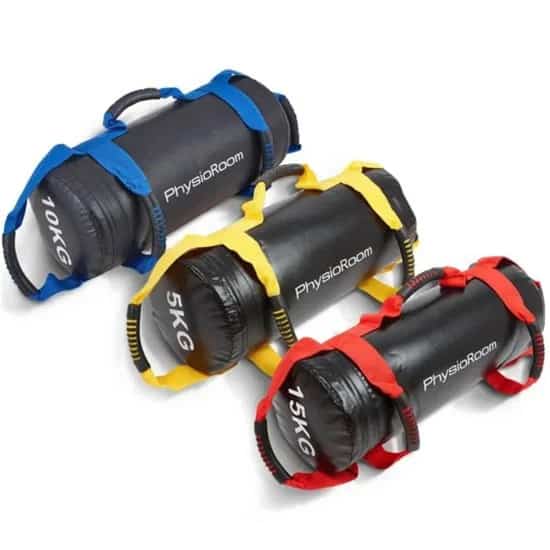
At its core, a power bag is typically filled with sand or other weighted materials. Its primary purpose is to provide resistance and instability during workouts. Moreover, it enhances strength, stability, and endurance.
A weighted bag comes in various types and sizes, catering to different fitness levels. Common variations include cylindrical, rectangular, or even sandbell-style bags. Sizes can range from small, manageable weights to heavier, more challenging options.
Weight variations within power bags typically span from 5 pounds to 100 pounds or more. Take this beginner-friendly Physioroom Weight Training Power Bag, for instance. Available in 5kg – 10kg, it allows you to add a whole new dimension to your routine. So, if you feel your current routine needs updating and refreshing, it’s the perfect way to liven things back up.
Choosing the right weight
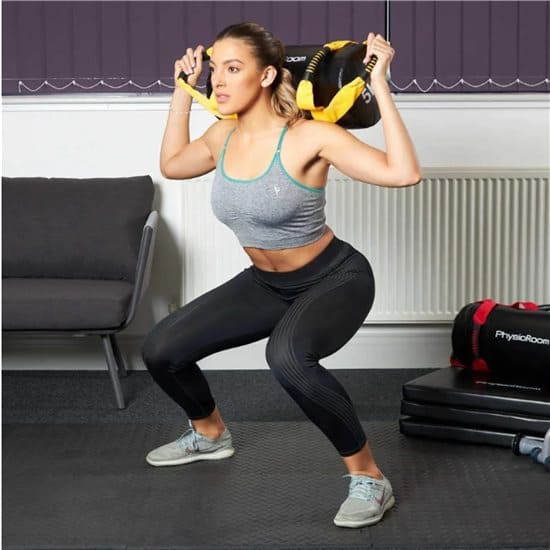
Selecting the right weight ensures effective and safe power bag training. One that’s too heavy can lead to injury, while too light may not yield the desired results. To determine the ideal weight, consider your current strength and experience. Start with a lighter bag if you’re a beginner, gradually progressing as you build strength. Listen to your body. Aim for a weight that challenges you without compromising proper form and technique.
Safety precautions
Safety is paramount when using a weighted training bag. Neglecting precautions can lead to injuries. Ensure your workout area is free of obstacles. Plus, it should provide adequate space for movement.
Maintain proper form to prevent strains or sprains. Use a non-slip workout surface, e.g., with an anti slip yoga mat, to prevent slips and falls. Always wear comfortable workout attire that won’t restrict your movements. Consider using weightlifting gloves for a secure grip while handling the power bag.
Basic Exercises
1. Squats
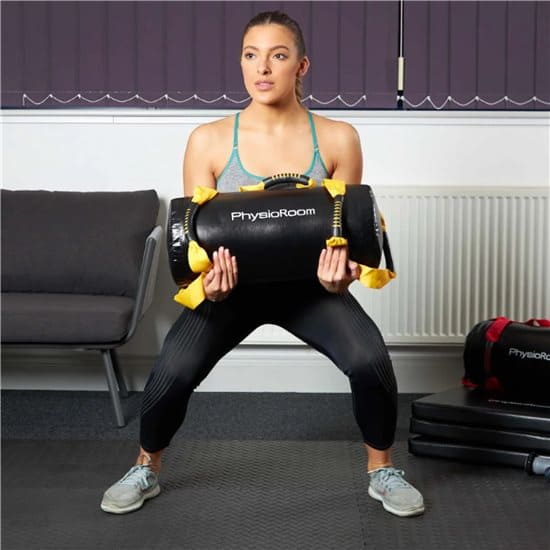
- Stand with your feet shoulder-width apart, holding the power bag at chest level.
- Initiate the squat by bending your knees and pushing your hips back.
- Keep your chest up and back straight as you lower your body.
- Lower yourself until your thighs are parallel to the ground.
- Push through your heels to stand up, returning to the starting position.
- Targets: Quadriceps, hamstrings, glutes, and lower back.
2. Lunges
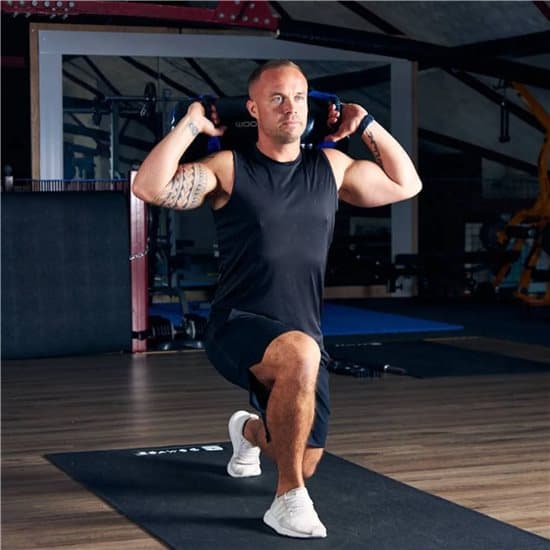
- Begin by holding the weighted bag workout at chest height.
- Take a step forward with one foot, bending both knees to lower your body.
- Your front knee should form a 90-degree angle, and the back knee should hover just above the ground.
- Push through the front heel to return to the starting position.
- Alternate legs for each repetition.
- Targets: Quadriceps, hamstrings, glutes, and calf muscles.
3. Overhead presses
- Hold the weights bag at chest level with both hands.
- Stand with your feet shoulder-width apart.
- Press the bag overhead, fully extending your arms.
- Lower the bag back to chest level with control.
- Keep your core engaged, and avoid arching your back.
- Targets: Shoulders, triceps, and upper back.
Form and technique tips:
- Maintain proper posture throughout each exercise to avoid injury.
- Engage your core muscles to stabilise your spine.
- Control the descent of the power bag to work on eccentric strength.
- Keep your movements smooth and controlled.
These fundamental power bag exercises build strength, stability, and endurance. Start with a manageable weight, focusing on mastering proper form. Then, gradually progresses to heavier bags or advanced variations.
Sample Workout Routine
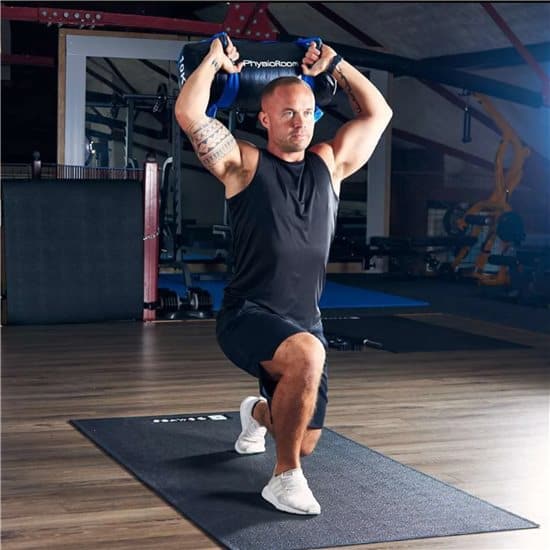
Warm-up
Start with 5-10 minutes of light cardio, such as jogging in place or jumping jacks. This will help raise your heart rate and warm up your muscles.
Workout
- Squats: 3 sets of 10 reps
- Lunges (each leg): 3 sets of 10 reps
- Overhead presses: 3 sets of 10 reps
Cool down
Finish with 5-10 minutes of stretching, focusing on the muscles you worked. Perform static stretches to improve flexibility and reduce muscle soreness.
Important notes:
- Use a manageable weight for your fitness level.
- Maintain proper form throughout the workout.
- Rest for 30-60 seconds between sets.
- Gradually increase the weight and repetitions as you progress.
- Stay hydrated throughout the workout.
This beginner’s routine provides a solid foundation for power bag training. It targets key muscle groups while minimising the risk of injury.
Round-up
Incorporating a weight training power bag into your fitness can be a game-changer. This is especially true with the right knowledge and technique. Remember the importance of safety, proper form, and gradual progression.
As you embark on this journey, you’ll discover a world of possibilities for achieving your goals. So, grab your power bag workout tool and follow the tips outlined here. Your stronger, fitter self awaits!
In the hunt for more gym supplies, then look no further than Physioroom. Explore our great range of training weights and take your workouts to the next level!
Here’s next on your reading list: How to Use a Pilates Bar


